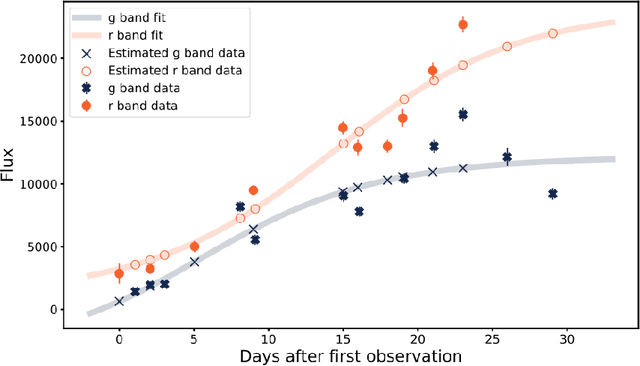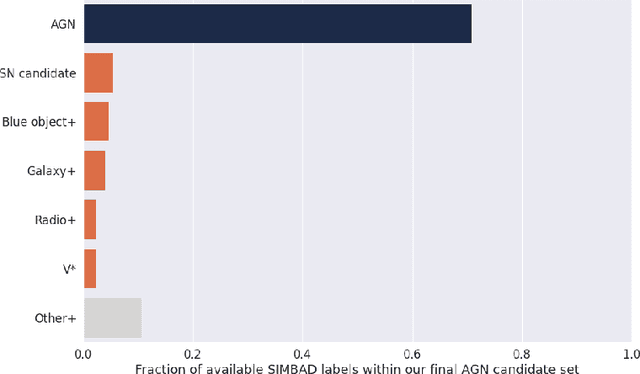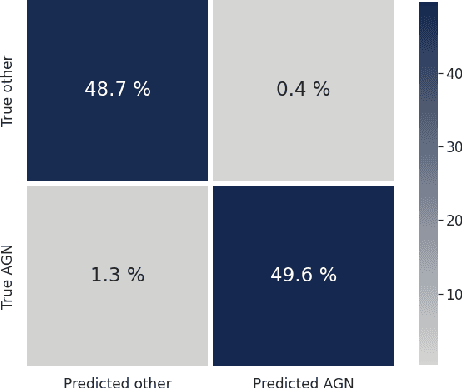Etienne Russeil
Exploring the Universe with SNAD: Anomaly Detection in Astronomy
Oct 24, 2024Abstract:SNAD is an international project with a primary focus on detecting astronomical anomalies within large-scale surveys, using active learning and other machine learning algorithms. The work carried out by SNAD not only contributes to the discovery and classification of various astronomical phenomena but also enhances our understanding and implementation of machine learning techniques within the field of astrophysics. This paper provides a review of the SNAD project and summarizes the advancements and achievements made by the team over several years.
* 14 pages, 4 figures
Multi-View Symbolic Regression
Feb 16, 2024



Abstract:Symbolic regression (SR) searches for analytical expressions representing the relationship between a set of explanatory and response variables. Current SR methods assume a single dataset extracted from a single experiment. Nevertheless, frequently, the researcher is confronted with multiple sets of results obtained from experiments conducted with different setups. Traditional SR methods may fail to find the underlying expression since the parameters of each experiment can be different. In this work we present Multi-View Symbolic Regression (MvSR), which takes into account multiple datasets simultaneously, mimicking experimental environments, and outputs a general parametric solution. This approach fits the evaluated expression to each independent dataset and returns a parametric family of functions f(x; \theta) simultaneously capable of accurately fitting all datasets. We demonstrate the effectiveness of MvSR using data generated from known expressions, as well as real-world data from astronomy, chemistry and economy, for which an a priori analytical expression is not available. Results show that MvSR obtains the correct expression more frequently and is robust to hyperparameters change. In real-world data, it is able to grasp the group behaviour, recovering known expressions from the literature as well as promising alternatives, thus enabling the use SR to a large range of experimental scenarios.
Finding active galactic nuclei through Fink
Nov 20, 2022


Abstract:We present the Active Galactic Nuclei (AGN) classifier as currently implemented within the Fink broker. Features were built upon summary statistics of available photometric points, as well as color estimation enabled by symbolic regression. The learning stage includes an active learning loop, used to build an optimized training sample from labels reported in astronomical catalogs. Using this method to classify real alerts from the Zwicky Transient Facility (ZTF), we achieved 98.0% accuracy, 93.8% precision and 88.5% recall. We also describe the modifications necessary to enable processing data from the upcoming Vera C. Rubin Observatory Large Survey of Space and Time (LSST), and apply them to the training sample of the Extended LSST Astronomical Time-series Classification Challenge (ELAsTiCC). Results show that our designed feature space enables high performances of traditional machine learning algorithms in this binary classification task.
 Add to Chrome
Add to Chrome Add to Firefox
Add to Firefox Add to Edge
Add to Edge